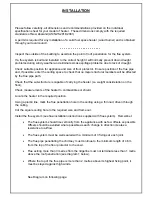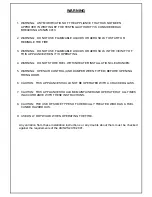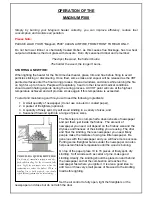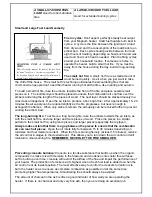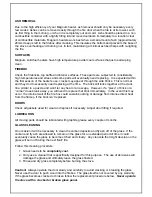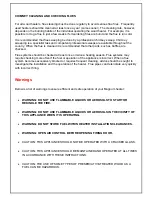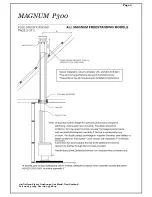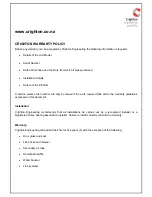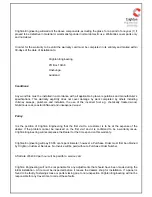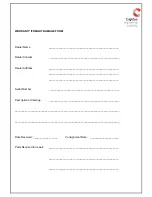
ASH REMOVAL
Due to the high efficiency of your Magnum heater, ash removal should only be necessary every
few weeks. Ashes can be removed easily through the fire door when the fire is at its lowest, such
as first thing in the morning, or when it is completely out and cold. Ash should be placed in a non
combustible container with a tightly fitting lid and moved outdoors immediately to a location clear
of combustible materials. Magnum heaters work best when a small amount of ash (approximately
20mm deep) is left in the firebox after cleaning. This insulates the bottom and prevents the base of
the stove overheating and burning out. In fact, maintaining a minimal ash bed helps with re-lighting
the fire.
SURFACES
Magnum solid fuel heaters have high temperature powder coat surfaces that just need wiping
clean.
FIREBOX
Check the firebricks, top baffle and interior surfaces. These parts are subjected to considerably
high temperatures and stress and some parts will eventually need replacing. It is expected within
the first season of the heater’s use, cracks may appear through the side bricks. This is normal
and they don’t necessarily need replacing at the time. The brick still locks together at the crack
line, similar to a puzzle and won’t let any heat or air escape. However, if a “piece” of brick or a
“corner” does break away, you will need to replace that brick immediately. In the event this may
occur, the internal wall of the fire box could sustain buckling or damage from intense direct heat
from the flames, if the brick isn’t replaced.
DOORS
Check all gaskets used for wear and replace if necessary. Adjust door fitting if required.
LUBRICATION
All moving parts should be lubricated with graphite grease every couple of months.
GLASS CLEANING
On occasion it will be necessary to clean the carbon deposits and fly ash off of the glass. If the
carbon and fly ash are allowed to remain on the glass for an extended period of time it could
eventually cause the glass to become etched and cloudy. Any creosote that might develop on the
glass will burn off during the next “
hot
” fire.
Follow this cleaning procedure:
1. Glass needs to be
completely cool
.
2. Only use a cleaner that is specifically designed for this purpose. The use of abrasives will
damage the glass and ultimately leave the glass frosted.
3. Rinse and dry glass completely before burning the stove.
Caution!
Always operate the door slowly and carefully to avoid cracking or breaking the glass.
Never use the door to push wood into the firebox. The glass itself is not covered by any warranty.
If the glass becomes cracked or broken follow the replacement procedure below.
Never operate
the stove with a cracked or broken glass panel.



